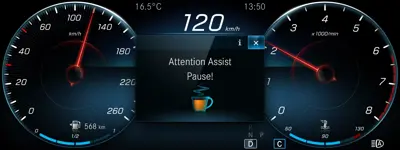- ADAS
- ACC
- ABS
- ALC
- AEB
- AES
- APA
- BSM
- CAS
- DDD
- DMS
- Efficiency Assist
- ESC
- Exit Warning
- FCW
- FCTA
- LCA
- LDW
- LKA
- RCTA
- TSR
Driver Drowsiness Detection
Driver Drowsiness Detection (DDD) is a safety feature in modern vehicles that uses sensors and algorithms to monitor the driver's alertness and detect signs of drowsiness or fatigue.
Driver Drowsiness Detection (DDD) systems are designed to alert drivers if they show signs of drowsiness, allowing them to take a break or pull over safely.
How Does It Work?
The system uses various sensors, such as cameras, steering angle sensors, and microphones, to monitor the driver's behavior and patterns. The software analyzes the data collected by these sensors to identify signs of drowsiness, including:
- Erratic steering
- Drifting out of the lane
- Slowed reaction time
- Changes in head position
If the system detects signs of drowsiness or fatigue, it alerts the driver through:
- Sound warnings
- Visual warnings
- Seat or steering wheel vibrations
Some systems may also recommend taking a break or suggest nearby rest stops for the driver to rest and recharge. Advanced DDD systems might even adjust vehicle features, such as climate control or seat settings, to help keep the driver alert.
Driver Drowsiness Detection is a crucial safety feature that can help prevent accidents caused by fatigue. However, it is not a substitute for getting enough rest or practicing safe driving habits. Drivers should always ensure they are well-rested and alert before driving and take breaks as needed.
System Naming
Manufacturers use different names for their DDD systems, such as:
- Attention Assist (Mercedes-Benz)

